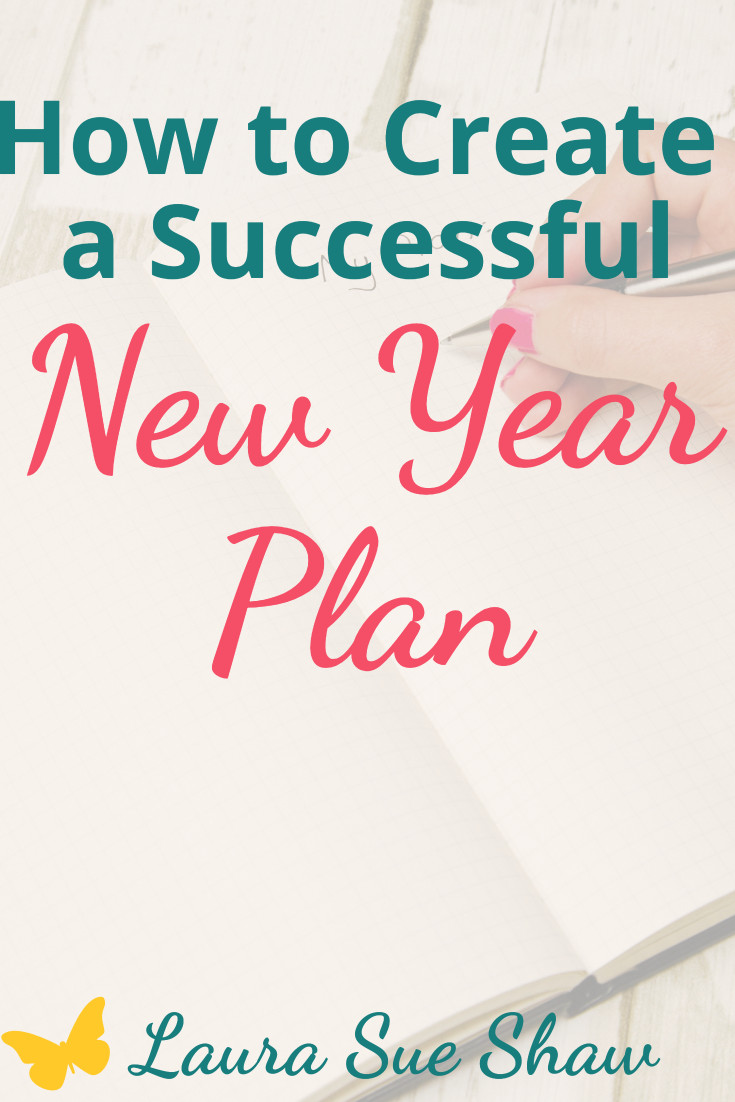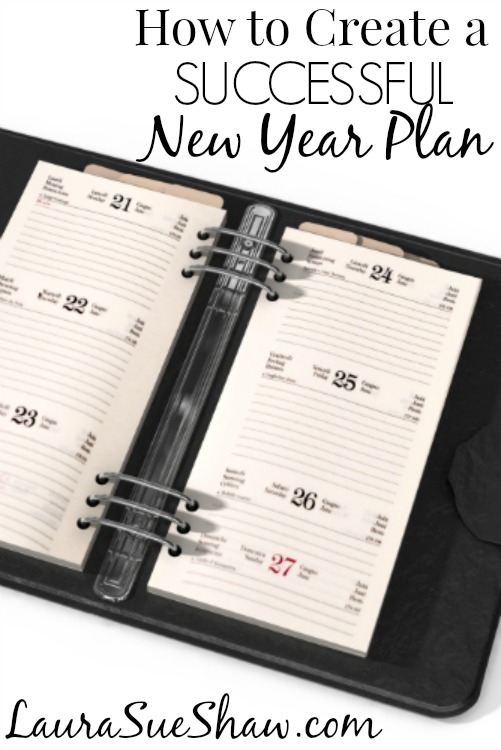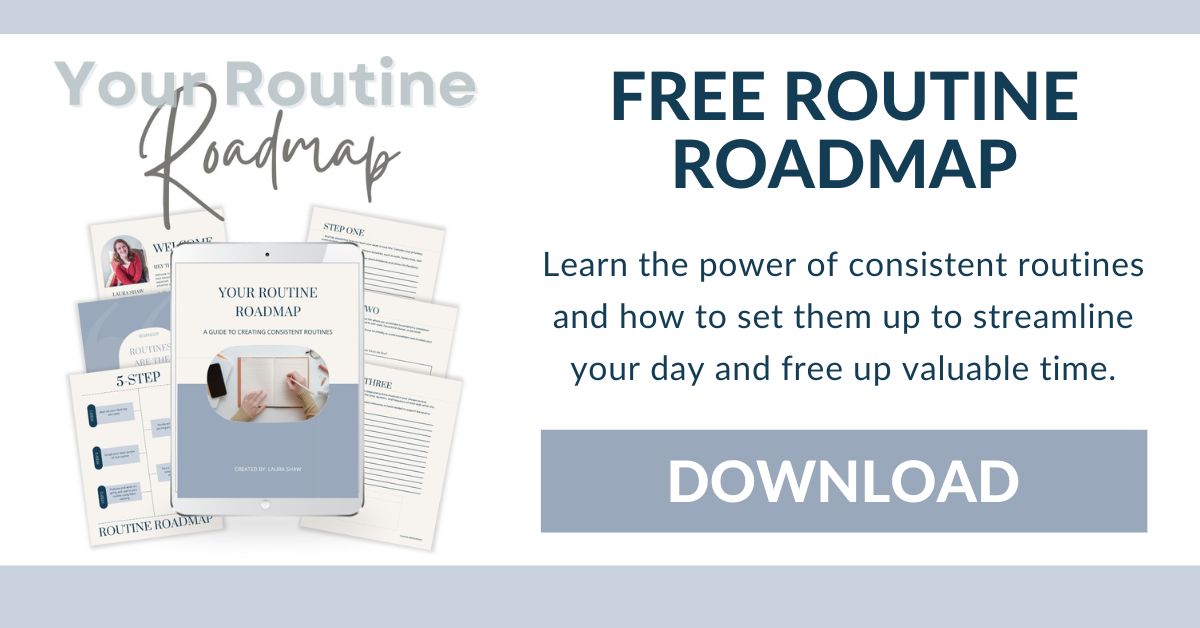*This post may contain affiliate links. For more information, read my disclosure policy.
Do you have a plan laid out for the new year? Do you know your priorities and goals?
Even though it may change throughout the year, It’s important to give yourself a starting point to at least start the year on the right foot.
Remember it’s not set it stone! But let’s create that plan that will be the launching point for a successful year.
This is the process I use to make a plan for the new year.
Define your Priorities
What is your focus for the new year? Take time to list out your priorities with pen and paper and rank them in order of importance. Where does God, marriage, kids, family, health, etc. fit into your life?
I like to go through and pick my top 3-5 priorities for this season. Remember, our seasons can change throughout the year. So we’re just establishing what’s most important to us right now.
Fill in Your Schedule
Look at a yearly calendar. What essential commitments have you already made? What important holidays, birthdays, and events do you need to plan around?
Once you have the major events penned in, you will have a better idea of what kinds of projects and goals for the year will be realistic.
This is where having planner you love really comes in handy. When you find a planner that works well for your life, using it is easier and you end up being more prepared and organized.
List Your Projects for the Year
This step is all about figuring out the “big” things you want to accomplish and then breaking those goals down into smaller steps. First, write down all your dreams for the year. Then, pick what is actually realistic.
Here are some category suggestions to get you started in thinking of projects:
-
-
- Financial (examples: establish an emergency fund, save for vacation)
- Work (examples: earn bonus check, earn raise)
- Around the house (Paint bedroom, remodel bathroom)
- Health (Lose 10 pounds, establish a workout routine)
-
Make sure your goals are “Smart.” Specific, Measurable, Attainable, Relevant (or Realistic), Time-bound. My examples were not smart goals, but those were just ideas to get you started.
Here are a couple of my “Smart” goals for next year:
- I will exercise 3 or 4 times a week for 30 minutes
- I will de-clutter and organize the office by March 31st
Find your WHY and THEME
These are optional, but I find them really helpful.
First of all, what’s the “Why” behind your goals? Why do you want to accomplish those goals you set? How are they going to impact your life? How will you feel when it’s done?
Those are all things to consider as you’re figuring out your “Why.”
Next, it’s fun to set a theme for the year. This is also referred to as your “Word” for the year. It’s just an intentional focus you want to work on during the year.
Some examples of mine have been “Simplify,” “Focus,” and “Joy.”
I love how having a word or theme for the year helps me be intentional on how I want to grow and learn through the year ahead.
You might also enjoy:
- How to Choose a Word of the Year
- How to Start Your Year Strong
- How to Use Trello to Crush Your Goals
Establish Good Habits
I think that good habits are essential to achieving your goals.
For example, if your goal is to get up a half hour earlier every day, some habits that would support that goal might be prepping your clothes and breakfast the night before or making sure you go to bed on time.
I have been trying to get up earlier and go to bed earlier. It’s hard but I know I’m more productive that way.
A key habit that helps me get out of bed when the alarm goes off is prepping my coffee pot the night before and setting it for delayed brew. It’s a lot easier to get out of bed when I can hear the coffee start brewing! 🙂
There are a lot of great resources out there on building self-discipline, but one of my favorites is 21 Days to a More Disciplined Life by Crystal Paine. But however you decide to build up your self-discipline and establish habits, it will be worth it when you start becoming more productive.
Create a Schedule
I think this is important to mention when creating a plan because managing your time and schedule well will be key to actually achieving your goals.
So create a schedule and block out times where you will work on your goals.
I have an ideal daily schedule. It’s “Ideal” so it just gives me an outline and starting point. Every day isn’t going to look like that but it helps me stay on track.
Another helpful thing to manage my time and schedule has been to have a daily focus. I do certain chores and business to-do’s on specific days.
This has allowed me to better focus and actually make more progress towards reaching my goals.
Be Realistic
If your goals are too audacious, you may get frustrated with lack of progress and ignore them. On the other hand, if they’re too small, you’re more likely to procrastinate because you’ll have “Plenty of time to get them done.”
I think somewhere in the middle is the perfect place to be with your goals – just a bit more than you think you can do. Also remember that you can change your goals! They’re not set in stone. In six months you may be in a completely different place, and that’s ok!
A mid-year check on your goals, or even better, quarterly, is a good idea to make sure you’re on track and to see if there’s anything you need to change.
Give yourself grace
Finally, please don’t be so hard on yourself!
I hate to break it to you, but your year will not go exactly as you planned. Life happens and unexpected things come up. But it’s ok.
Your road map here will help you pick up where you left off or reevaluate your priorities and goals.
Every bit of progress counts. Creating a plan for your year is a smart decision that will help you get closer to and achieve your goals.






Happy New Year! This post was featured at this week’s pin party at The Pin Junkie!
A big and jolly Merry Christmas all the way from Sweden. I hope you have a blessed day without so many hours online!
I am reading this in 2020 and it is really helpful.
Thank You Laura.